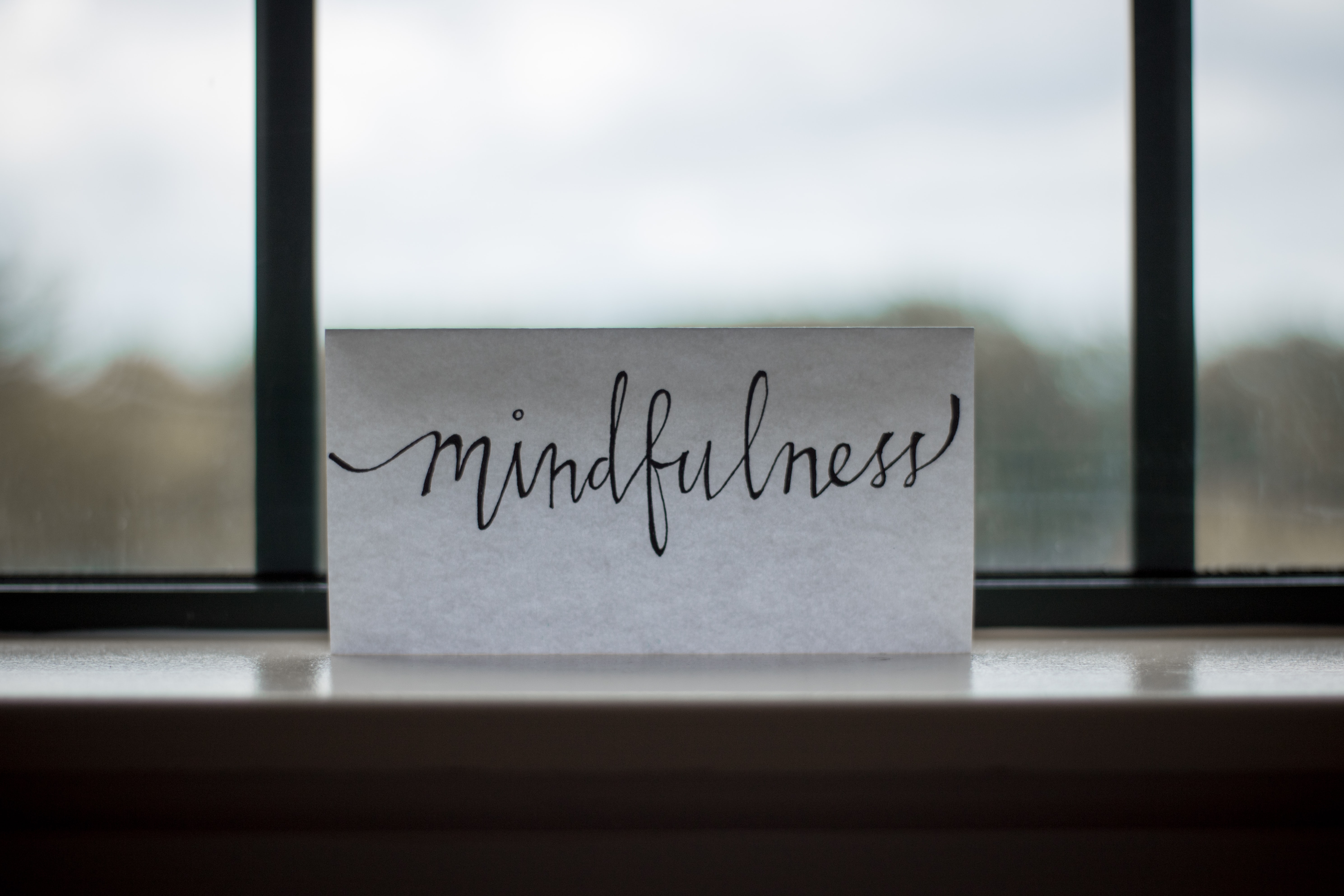A calming path to sleep

One of the most common obstacles to sleep is a busy mind. A busy mind can mean different things for different people. It could mean reviewing and processing your day, stressing, planning, bouncing around to lots of different topics or even worrying about the consequences of not sleeping.
Your mind/body interpret these thoughts, and the emotions that come with them like there is a saber tooth tiger next to your bed! This puts you on high alert because our mind/body developed a system, fight or flight, to override our sense of sleepiness if there was a threat to our survival.

Mindfulness (sometimes called meditation) and/or relaxation techniques can help your mind/body to relax enough to fall back asleep.
Mindfulness of the breath
When our minds are focused on thoughts of the past or the future while we are trying to sleep, we often get sucked in, to problem solve, plan, etc. This can feel like a merry go round you can’t escape. Learning to step back from your thoughts and notice them for what they are, just thoughts, can calm the mind. Instead of looking from your thoughts, you want to look at your thoughts. Noticing them as just thoughts, nothing more and nothing less. You can bring this awareness to all of your senses and instead of judging your experiences just observe them.

One of our favorite ways to practice this, is using mindfulness of the breath. Mindfulness is the practice of bringing non-judgemental awareness to the present moment. The breath is always in the present moment, making it a great way to anchor ourselves in the here and now. We close our eyes and focus our mind on the physical sensations of the breath, going in and out of the body. Notice how the air feels in your nose, down your throat, into your rising chest and belly. Notice how it feels to exhale and release the air from your belly, chest, throat and nostrils. When thoughts arise, let them pass like clouds floating across the sky. You may also notice sounds, smells, physical sensations. Try to notice them for what they are in the moment, the sound of the fan, the smell of lavender on my pillow or the feel of my sheets Most of us tend to drift into our thoughts during this process and that’s okay! The most important thing is to notice that you have gone into the “story” of those thoughts (i.e. starting to plan for work tomorrow or thinking about a conversation from yesterday, etc.) and bring yourself back to the physical sensations of the breath.
Progressive Muscle Relaxation
Progressive muscle relaxation (PMR) helps to calm the body by releasing tension from your muscles. For many, focusing on calming the body helps to calm the mind. PMR involves tensing muscles for 10-15 seconds and then relaxing them for about 30 seconds, one muscle group at a time. Start with your forehead, close your eyes and scrunch your face so that the muscles are contracted and hold them tight for 10-15 seconds. Notice what the tension feels like. Release the tension from your face, focusing on the difference between tension and relaxation. Next, tense your jaw muscle for 10-15 seconds, as tight as you can. Then release the tension and notice what it feels like when your jaw is relaxed. Repeat this process for each muscle group… your shoulders, arms, hands, abdomen, buttocks, thighs, calves and feet.
Just like the other guidelines we’ve given you to improve your sleep, these techniques have to be used consistently to make a difference. Pick one mindfulness or relaxation technique (while we suggested two, there are as many different ones as there are people!) and practice it each time you are going to sleep and when you wake up in the night for a least a week or two to see if you find it helpful.
Discover your sleeper profile with this sleep test
Start



